The A. Lange & Söhne Lange 1 and Lange 1 Daymatic
A mirror image of the classic Lange 1 or an icon in its own right?
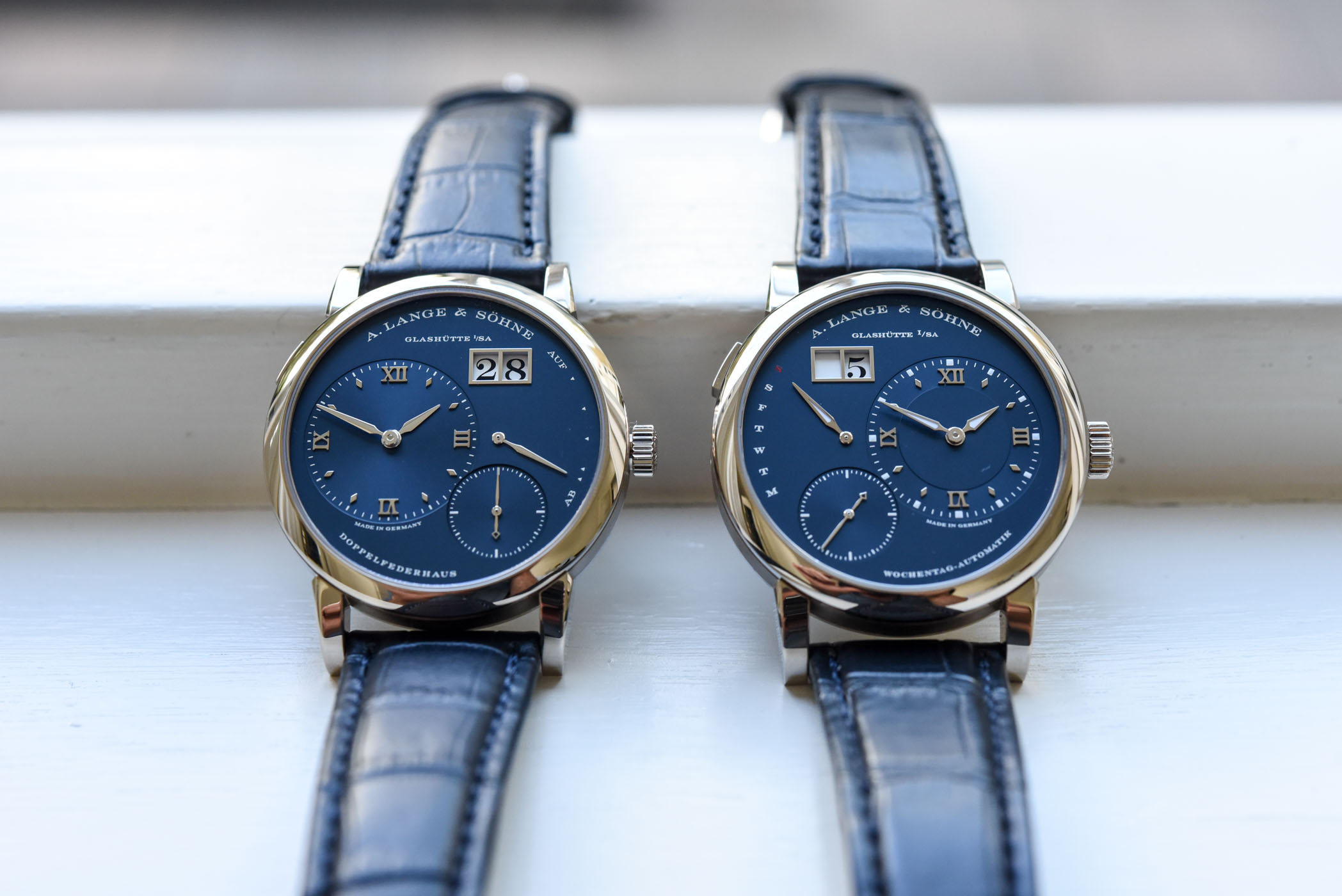
The other day A. Lange & Söhne sent us two watches for review and not one, as is normal procedure. The two watches were the new blue dial Lange 1 and Lange 1 Daymatic. While the new blue dials are stunning (really they are!), we already covered them and well, without being blasé about it, it’s a dial colour and we cannot say much more about this. The thing that really intrigues me, ever since the Lange 1 Daymatic was introduced back in 2010, is how these two timepieces compare. So we put them next to one another, the iconic hand-wound Lange 1 that has become so important for the brand and the newer automatic sibling named Lange 1 Daymatic. How do they compare? What are the differences and common points? And, what is your favourite?
The Lange 1 was presented as one of the first four wristwatches introduced by the resurrected A. Lange & Söhne in 1994. Together with the Arkade, the Saxonia and the Tourbillon “Pour le Mérite”, it made history, and especially the Lange 1, which became the “ambassador” face of the revived German brand. Indicating hours and minutes in an off-centre dial, a large date and the power reserve of the manually- wound movement, it does not necessarily qualify as a classic dress watch.
However, due to its overall classic style and restrained proportions, I wouldn’t be shy to wear the Lange 1 as a dress watch (especially in yellow or white gold with a silver dial). Because the hours and minutes sub-dial is on the left side of the dial, often slipping underneath your cuff, we could even argue that it’s a perfect dress watch as dress watches are meant to be discreet about the time.
The real question isn’t really whether the Lange 1 or the Lange 1 Daymatic are perfect dress watches, but which is the model to get? Whether you prefer the icon, the first, the original Lange 1 or its automatically wound sibling, the Daymatic. For this, let’s first have a look at some of the specs and how they compare.
Case and design
The Lange 1 measures 38.5mm in diameter and is 9.8mm thick (or thin), while the Lange 1 Daymatic measures 39.5mm in diameter with a 10.4mm thickness. This means that the Daymatic is 1mm larger in diameter and 0.6mm thicker. It sounds like virtually nothing, but on the wrist, you can notice the difference. On my wrist (around 19cm), both watches wear very pleasantly, and the difference in size is hardly noticeable. I can imagine that on smaller wrists, this minimal difference will be more perceptible – but then again, it will remain minimal. Let’s say that the Daymatic has a slightly more modern “presence” and the Lange 1 retains the classic proportions of the inaugural model of 1994. Still, we’re talking details here, especially since the bezels and lugs aren’t different.
The finishing of the case is also equal on both watches. Polished bezels and lugs, straight brushed casebands, polished line around the caseback and circular brushed caseback… Again, virtually no differences here. We have the same shapes for the lugs (with Lange’s typical recess when the lugs meet the case and a bevel on the external side), the crown has the same shape and design (even though the Daymatic is slightly larger, to meet with the “thicker” case) and there’s the same pusher at 10 o’clock to adjust the date. Once again, not enough here to clearly differentiate these two watches. Both are equally beautiful, equally shaped, equally elegant and restrained… and equally Lange!
Having with me two of the newly introduced “blue editions” makes things easier for comparison matters. Both have an 18k white case and a blue dial. On the photos, you can notice that the straps are slightly different, with the Daytmatic fitted with a more “squarish” and more padded strap. Yet the colours are the same as is the quality. As for the buckle… Well, you can easily guess. They both have the same pin buckle in white gold.
So, after those first 700 words, we haven’t really come to any conclusions. With the exception of 1mm here and there, and a slightly different strap, both watches can’t really be differentiated. However, this is about to change with the dials, the displays and the mechanics that drive them. And this goes well beyond the automatic/hand-wound difference.
Dial and display
Both the Lange 1 and the Lange 1 Daymatic we had for this review were fitted with blue dials – these are part of a one-year-only production run, so if you’re interested in one, be fast. There is no difference in terms of colours and treatment, and both watches have a dark blue dial with a galvanized treatment, which produces a metallic colour – an especially playful tone of blue.
One next to another, when looking closely at the dials of the Lange 1 and the Lange 1 Daymatic, you immediately spot that one is the mirror image or twin of the other. All the indications are on the opposite side of the dial. The main difference between these two come from the additional complication. While the Lange 1 features a power reserve indicator (an obvious choice for a hand-wound watch), the Daymatic replaces it with a day-of-the-week indicator – a power reserve doesn’t make much sense on an automatic watch. However, the position of this additional indication is also mirrored and features the same hand and the same arched track.
Some other differences are noticeable on the dial of these watches. The large date is identical, the small seconds haven’t changed a bit, but there are two important differences. The first one is the style of the hours and minutes counter. While entirely snailed on the Lange 1, the Daymatic has two different surfaces, as only the periphery is recessed and snailed, while the centre is raised and flat. Also, even though the indexes are the same – a combination of white gold applied Roman numerals and diamond-shaped markers – their position is slightly different. As a result, the Daymatic feels more packed, more compact, a bit more busy than the Lange 1, which is more minimalistic. Some will prefer the clean Lange 1, some will prefer the more complex, maybe more casual Daymatic layout.
The last (but really not least) difference concerns the hands. Certainly, the shape is “Lange-esque” on both watches. Yet, there is one major difference: the Daymatic has hours, minutes and day hands that are luminous, while on the Lange 1, the hands are plain polished gold. Does it make a difference? Yes, a lot actually. This is what, to me, sets the two watches apart – not only in terms of design but mainly in terms of vocation. One retains the ultra-classicism of the inaugural model, the other makes a few concessions to practicality and offers a less austere look – and that, just because of the small inclusion of luminous paint on the hands and a different layout for the hours/minutes sub-dial.
So now, how do these watches look once they’ve strapped on the wrist? An important factor with such watches is how they interact with a suit and tie. Here again, the vocations of both watches are clear, because of the mirrored displays. If the Lange 1 loves to be discreet and shy, by hiding the time when the watch is partially placed under the cuff, the Lange 1 Daymatic again makes concessions to practicality with a display that is visible, even when the watch isn’t entirely visible…
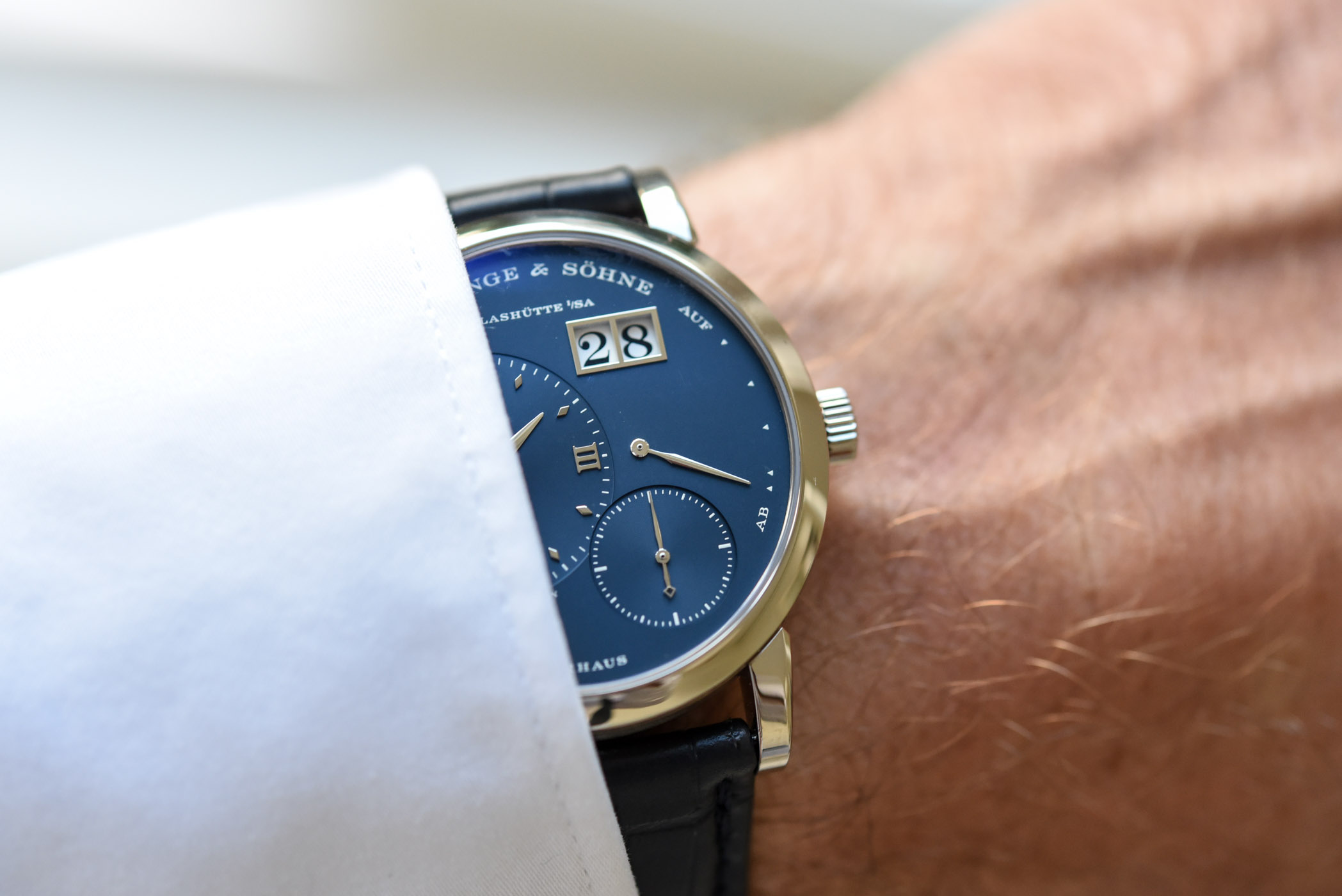
As you can see, when the Daymatic is worn, with only the right side of the dial visible, the time still remains displayed – while on the Lange 1, all you’ll see is the date and the remaining power. One plays it discreetly, the other is more business-oriented. It isn’t elegant to look at the time during a meeting but… sometimes you have to consult the time. So better do it in style with a hint of discretion.
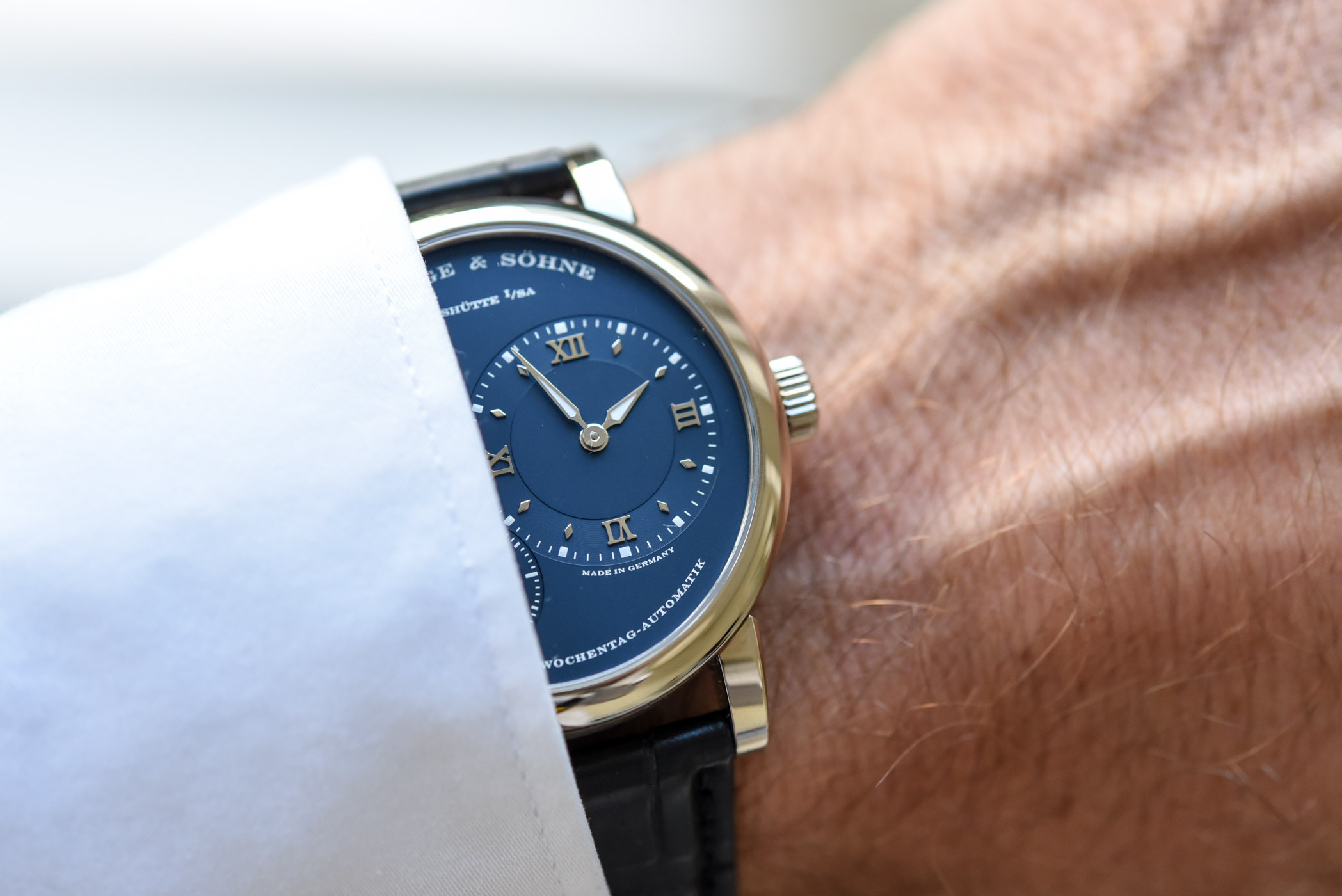
Movement
The same difference of vocation is clearly visible on the movement side. One is hand-wound and faithful to the inaugural Lange 1. The second is automatic and adds practicality and a certain peace-of-mind to its wearer (or at least, the ability to forget about the watch and its winding). Two different movements for two different philosophies.
If both movements result in an overall equal (yet mirrored) display, the way to achieve this is entirely different. On one side is the Lange 1, equipped with a manual movement with “Doppelfederhaus” – a not-so-poetic word to indicate the presence of a double mainspring. This movement, even though it looks familiar, is entirely new, compared to the calibre that equipped the Lange 1 in 1994 – it was introduced alongside the subtle facelift done by A. Lange & Söhne on its icon in 2015 (incl. subtle changes on the bezel and the inscriptions). A closer look at this movement reveals much more modern mechanics, still with a familiar look. As we explained in this comparison of the old and new Lange 1, it has a brand-new architecture (a bit larger but a bit thinner), a new in-house balance wheel, a new date mechanism and revised decoration.
Still, this calibre L121.1 retains the 72h power reserve and the exact same display as the inaugural model. The decoration is top-notch and the look of this movement is all about the German School of Watchmaking – 3/4 plate in untreated German silver, thin ribbings, screwed gold chatons and an engraved balance cock. This movement is superbly decorated and technically great but it is rather discreet and “shy” (it doesn’t reveal much of its innards). For this reason, and because of the hand-wound architecture, it feels to me like a connoisseur’s movement.
On the other hand, we have the movement of the Lange 1 Daymatic. First and foremost, this calibre L021.1 is self-winding – but you’ve probably guessed that already. What to say about this movement? Well, don’t consider it a simple evolution. It has nothing to do with the hand-wound movement of the Lange 1. In fact, it is actually a pretty complex movement, comprising no fewer than 426 parts and 67 jewels (really, that’s a lot). It features the in-house balance wheel with eccentric poising weights and an in-house hairspring too. The power reserve is “only” 50 hours, which is less important in the case of an automatic watch.
What is important is that this movement is much more “flamboyant” than the one in the Lange 1. Not only is it geared for daily use (indication of the day, position of the hours/minutes sub-dial, automatic) but, because of its more complex layout and the presence of a gold-coloured rotor and more complex bridges, it requires less horological maturity to be understood. My point is that this movement is superb and appealing, even for non-experienced people. The movement of the Lange 1, on the other hand, might require some more trained eyes to reveal its hidden beauty. Both movements have received the same attention to detail but the visual result is entirely different.
Conclusion
So what to conclude of this side-by-side comparison between the Lange 1 and the Lange 1 Daymatic? My point is that we are in front of two watches that are very close in style but highly different in philosophy. Everything lies in the details, but in the end, these details set the two watches apart.
On one side, we have the iconic Lange 1, a watch that has all the classism, distinction, class, elegance and mechanical beauty that you can expect from A. Lange & Söhne. It is brilliant in every single aspect and its flaws create its charm – if ever there are some flaws on this watch. However, considering the discretion of this watch, its non-exuberance and its rather shy movement, it is a watch that I’d recommend to more mature enthusiasts. The Lange 1 is a watch that will complement an already solid collection.
Even if it is the mirror image of the Lange 1, the Daymatic is intrinsically different. Certainly, it delivers the same amount of elegance, timeless appeal and class, yet with a hint of modernity and practicality. Because of its more rational display, because of the indication of the day, the presence of luminous hands and mainly, a self-winding movement, it would be the watch to recommend to someone who intends to wear this watch on a regular basis. Not that the Lange 1 can’t deliver a lot of pleasure here, but the Daymatic is simply better in this perspective. It is easier to apprehend and the movement has more of that “wow effect” that you expect from such high-end watches. This is where these two “non-identical twins” differentiate.
Yet, practicality and a complex movement come at a price at A. Lange & Söhne and the Daymatic requires an extra EUR 7,000 compared to the Lange 1 (EUR 38,700 for the Daymatic vs. EUR 31,700 for the Lange 1). This, combined with the undebatable aura of the Lange 1, might play in favour of the hand-wound version. In any case, there are no wrong choices, just preferences.
More details on www.alange-soehne.com.

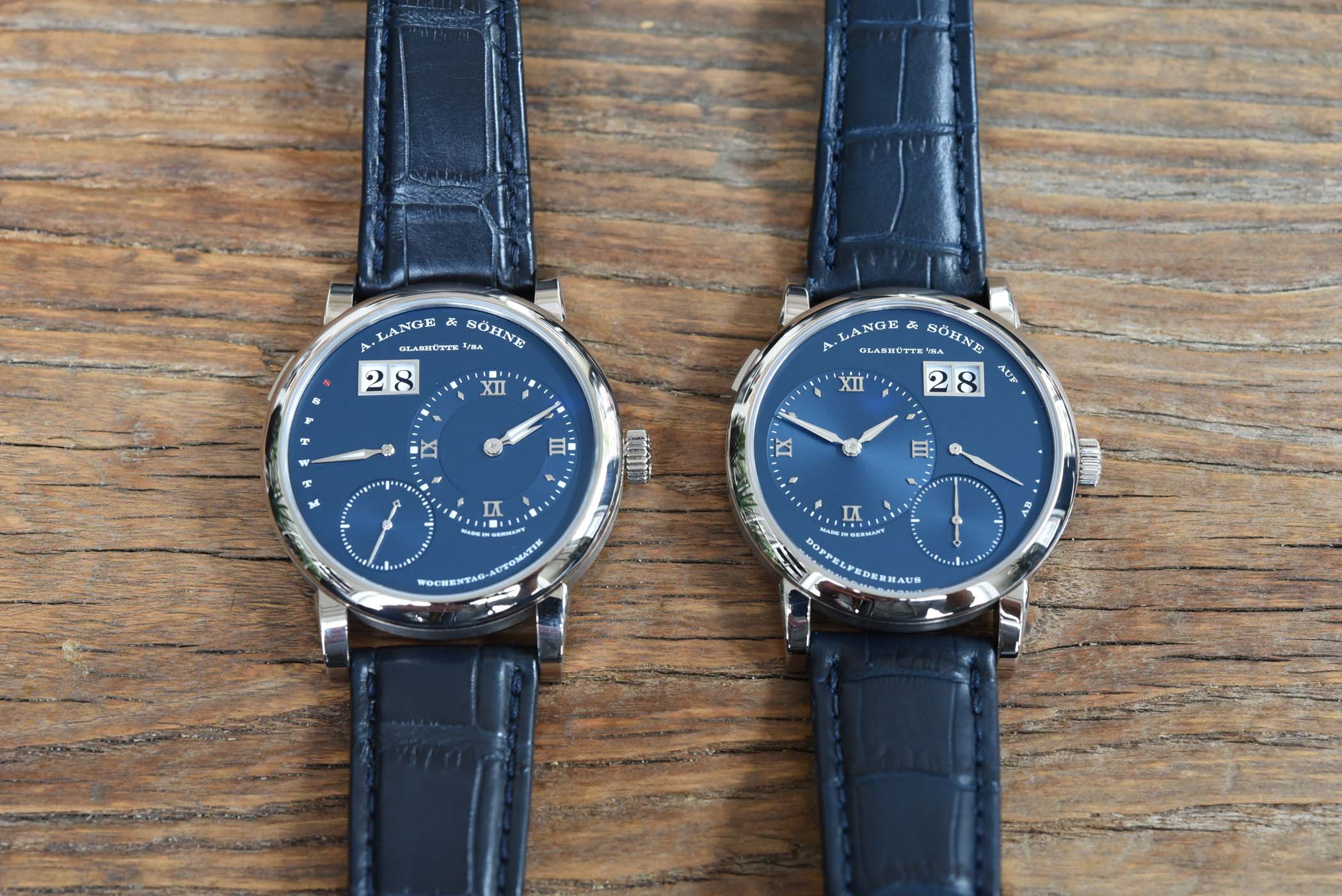

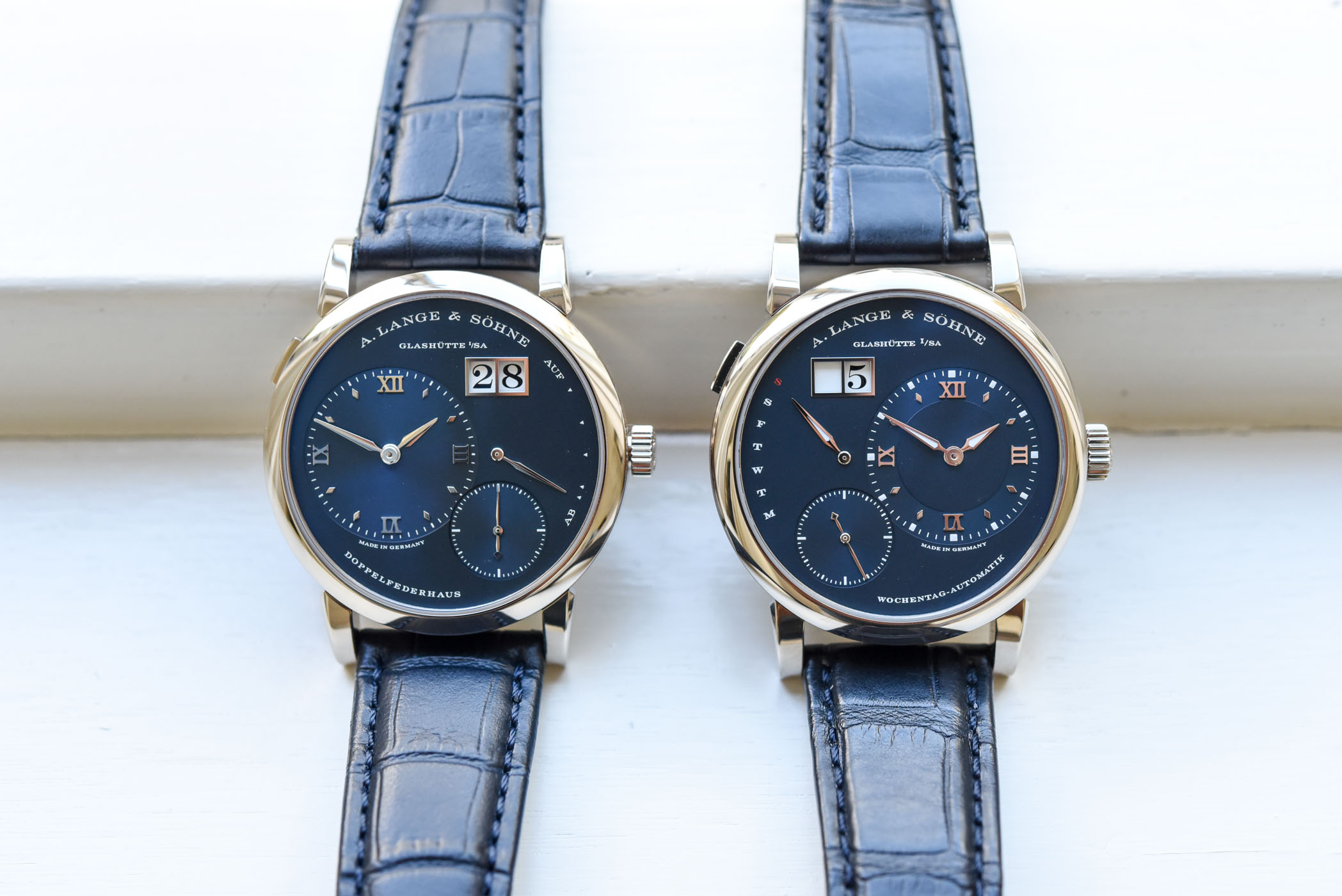
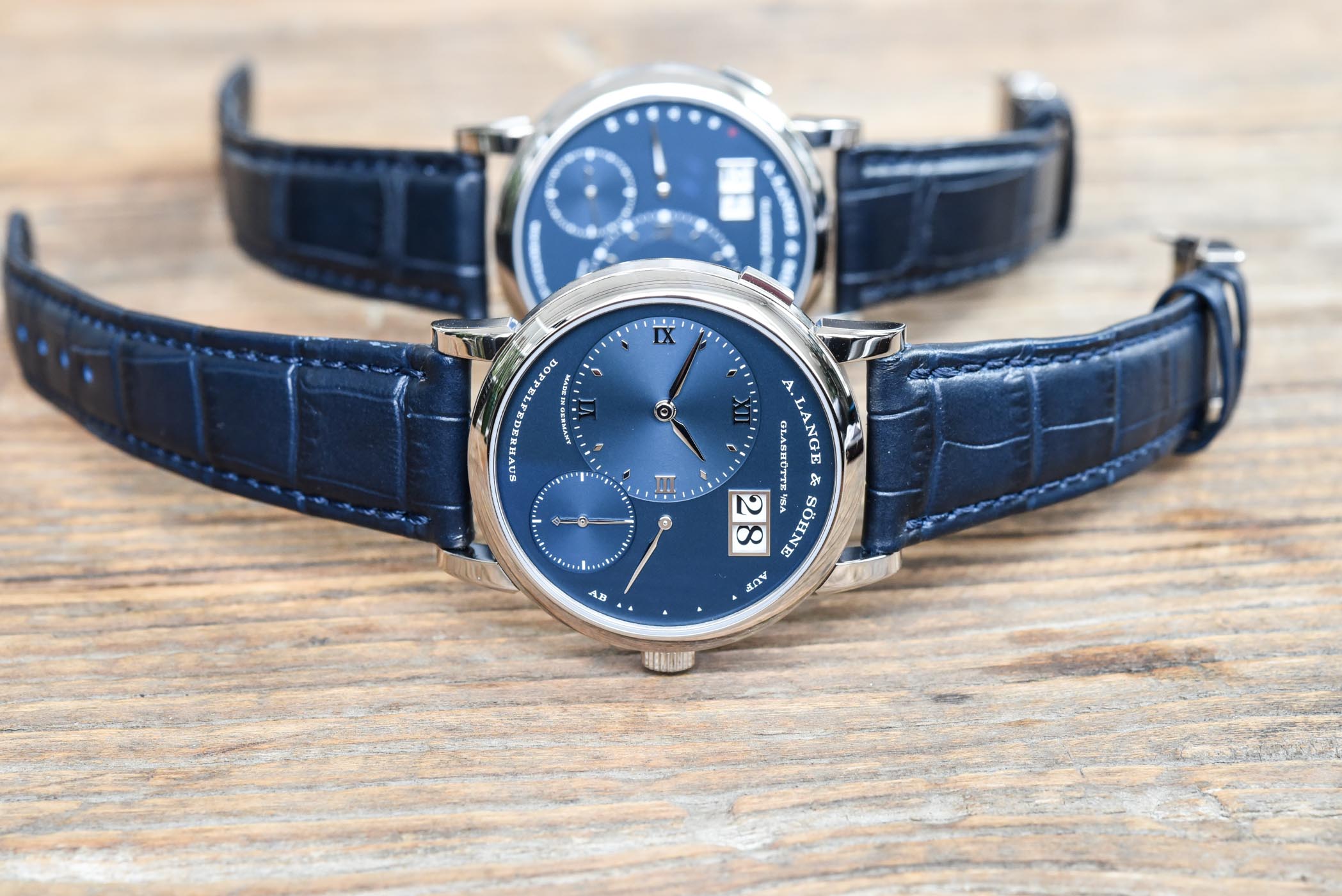
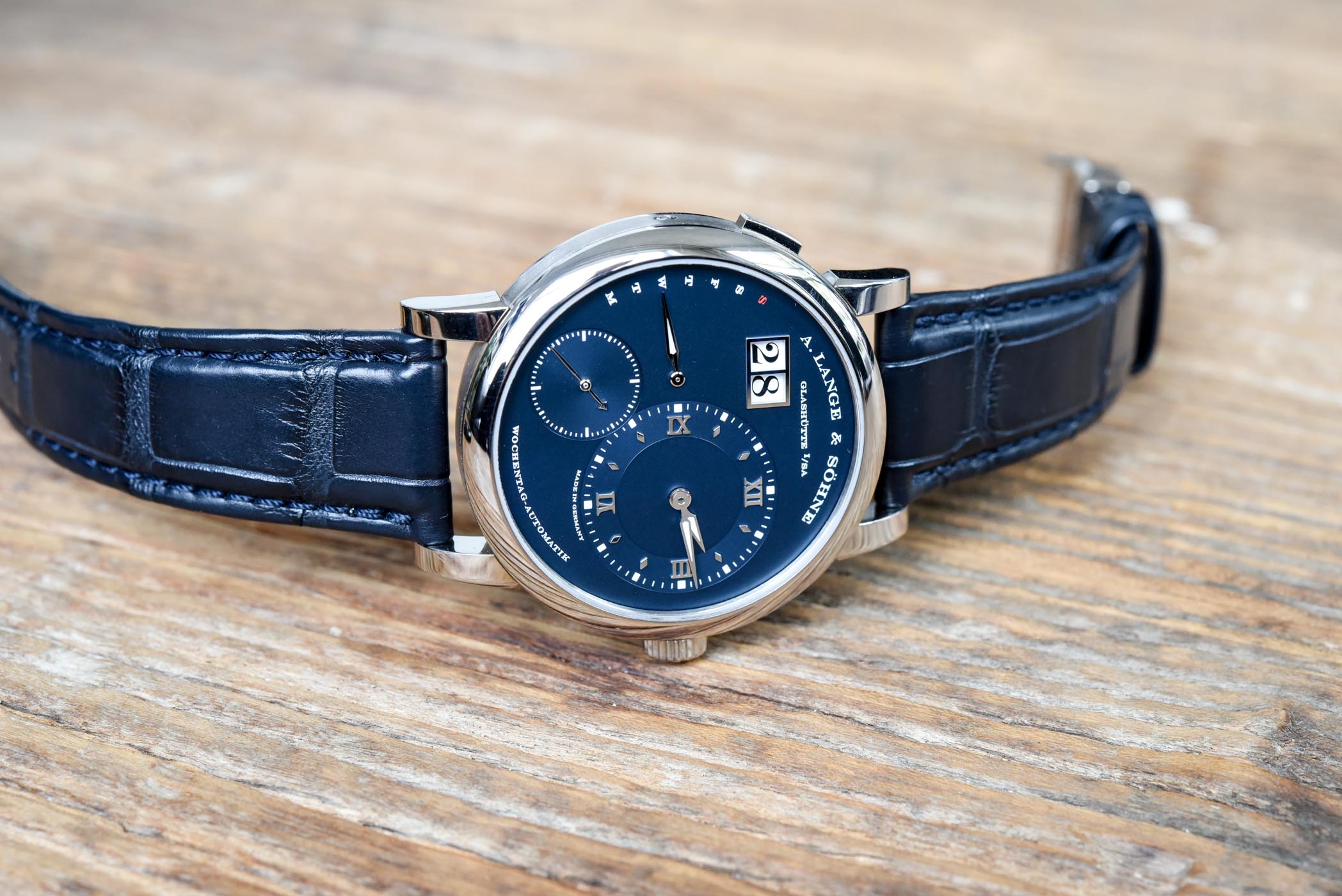
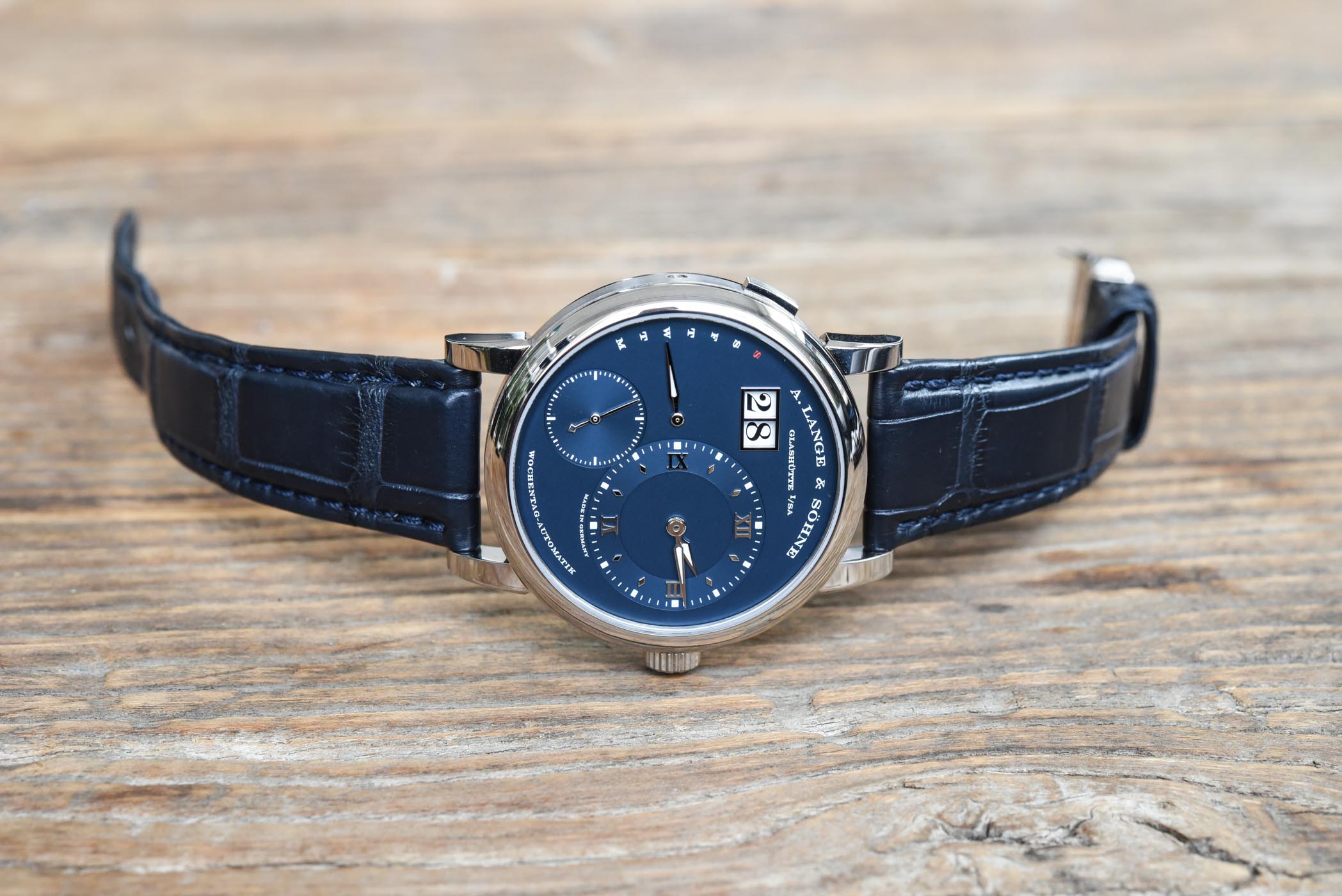
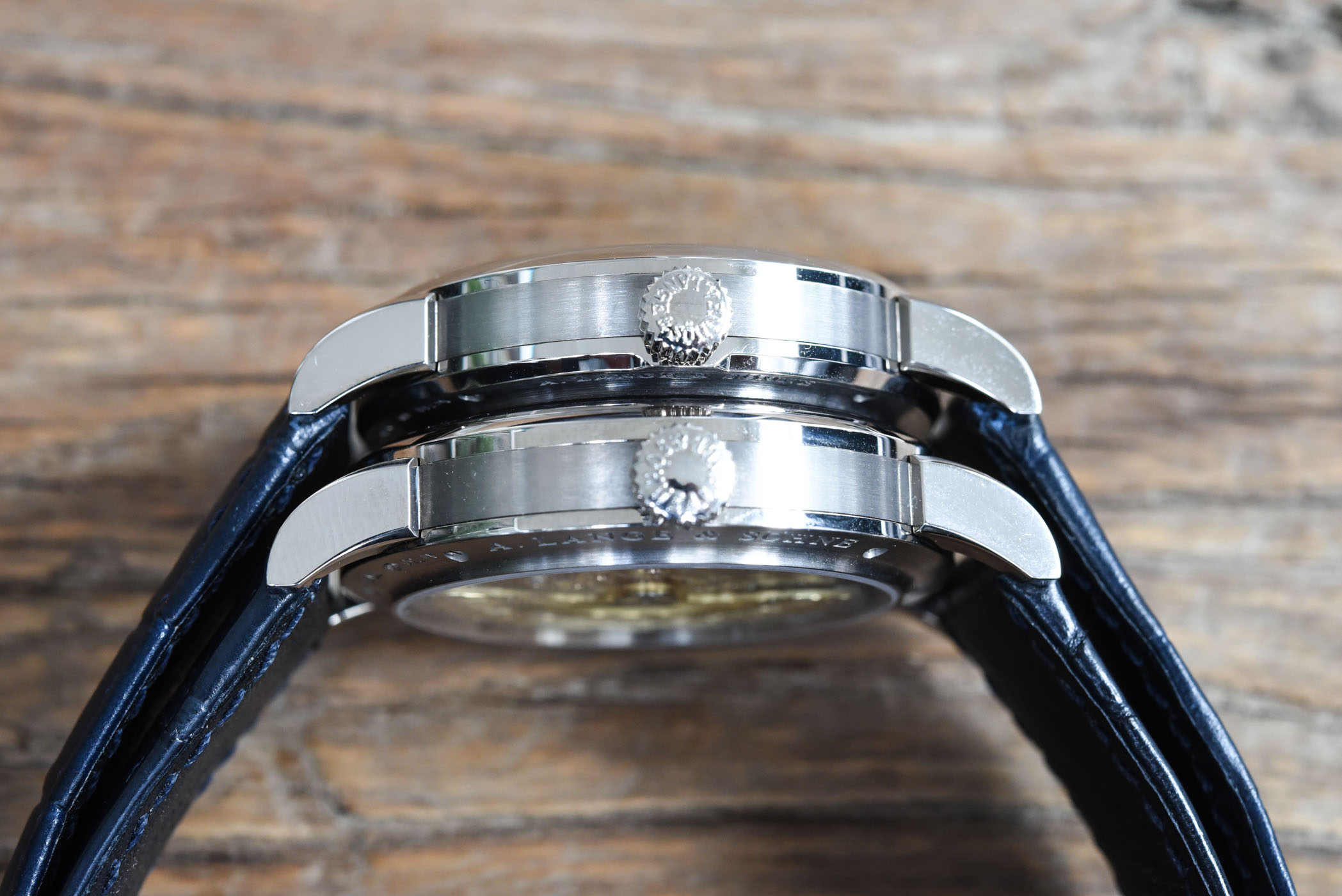
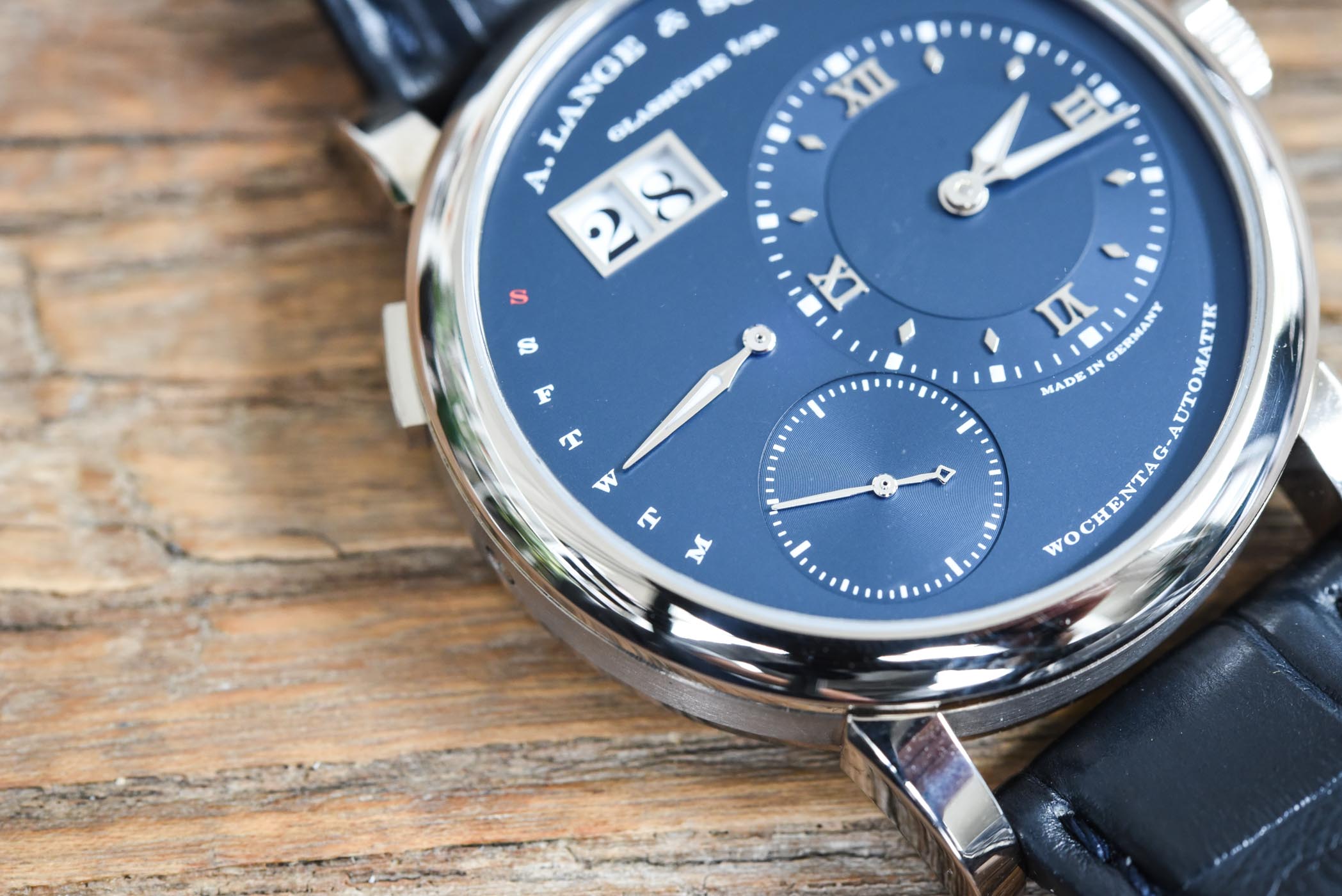
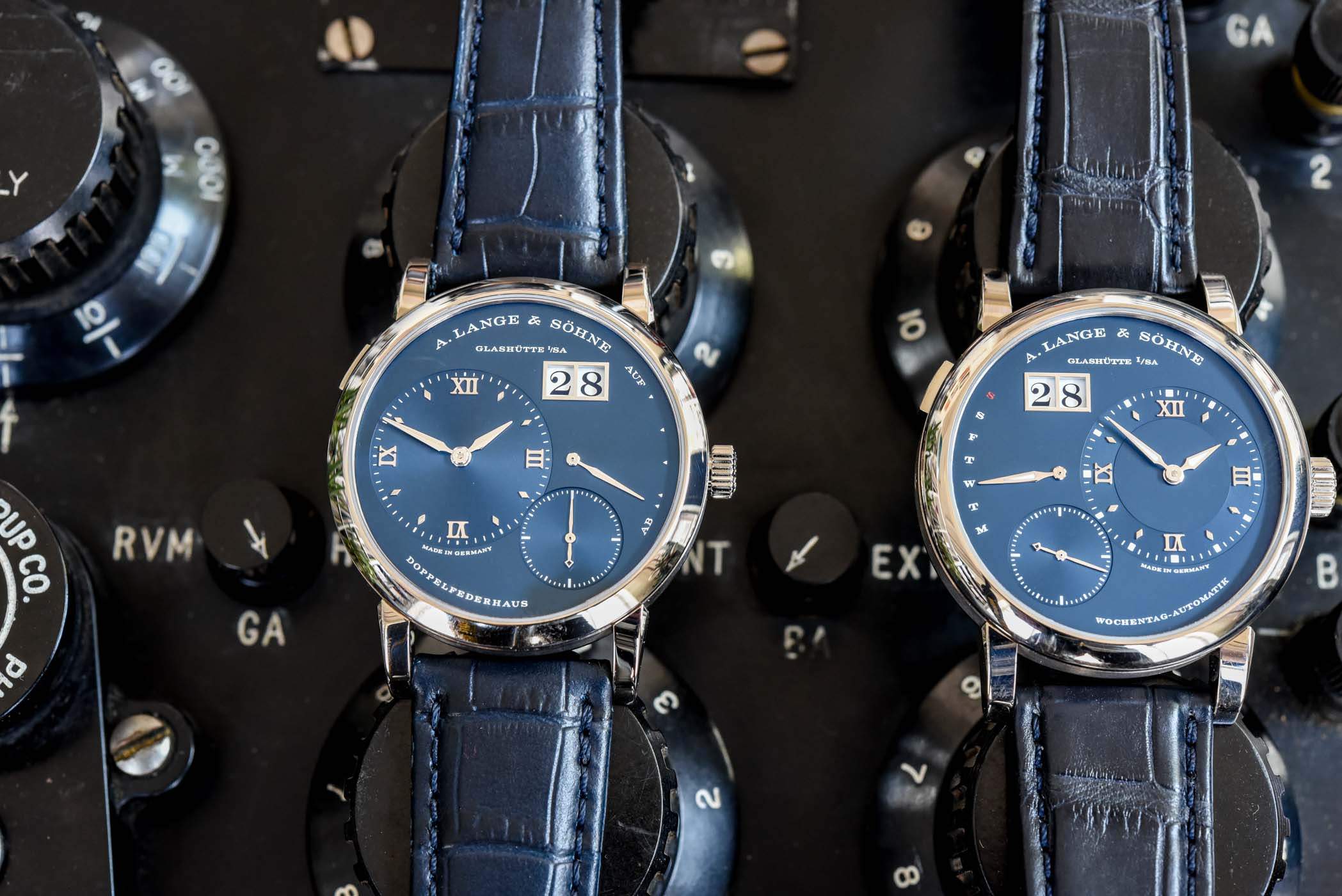
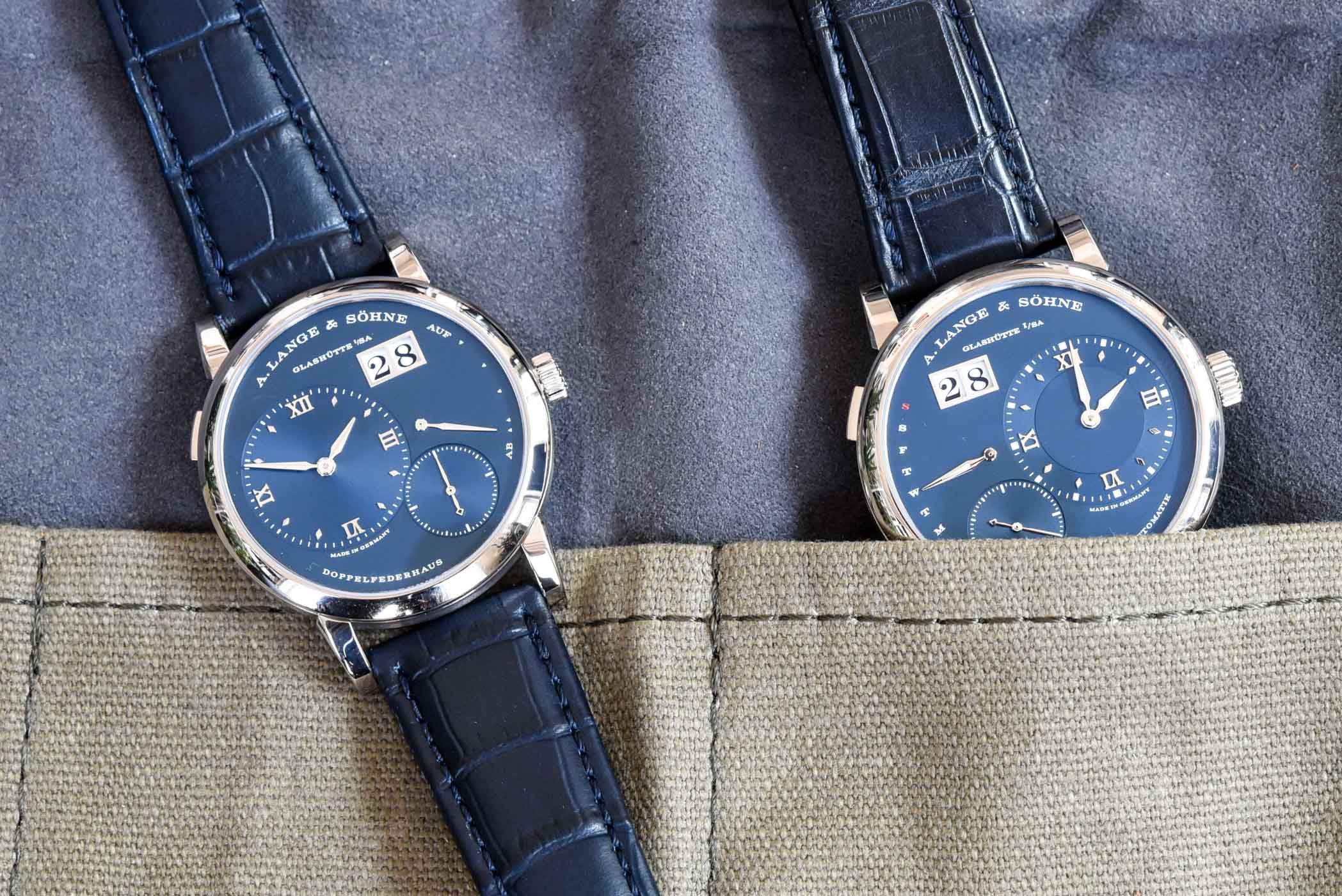

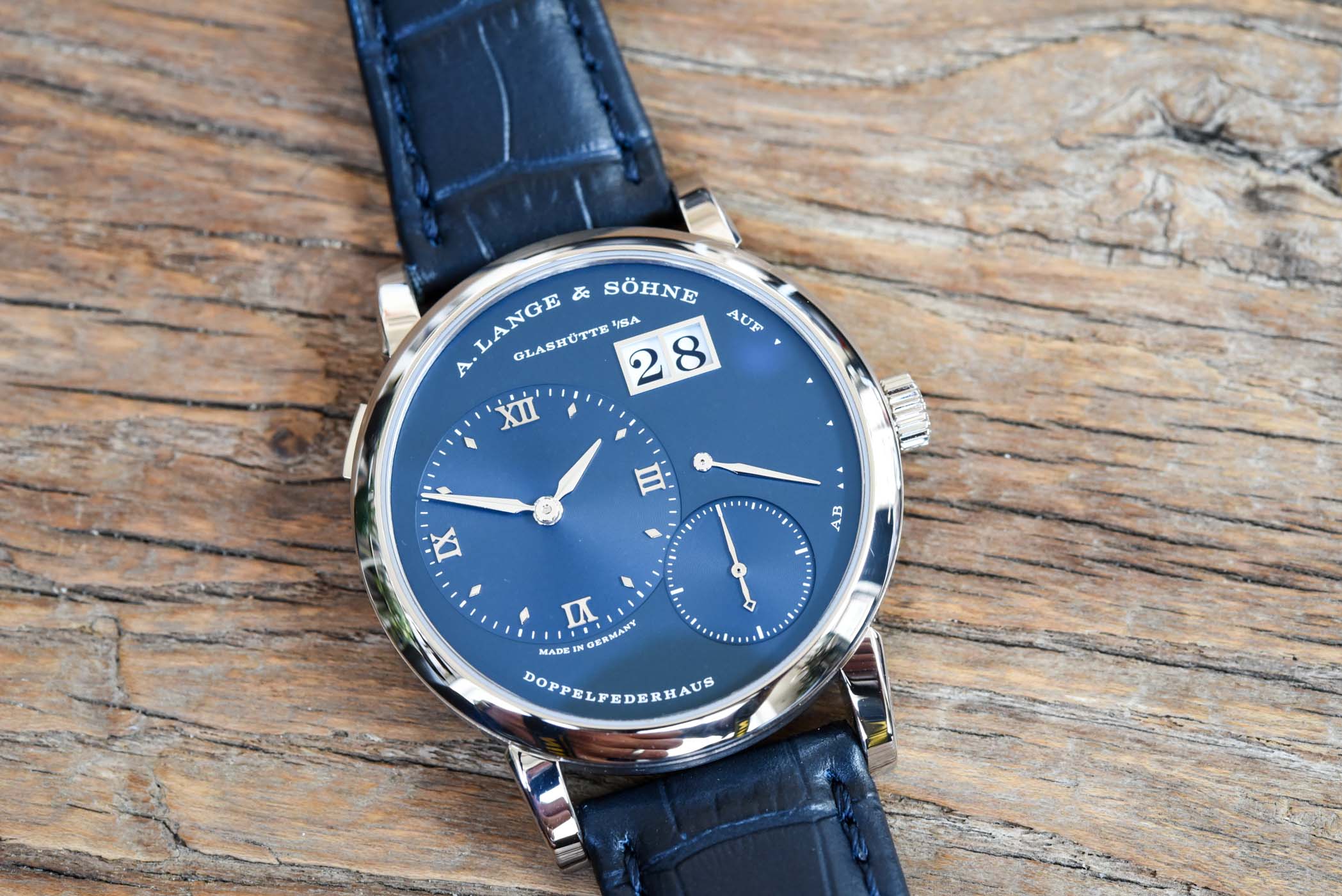
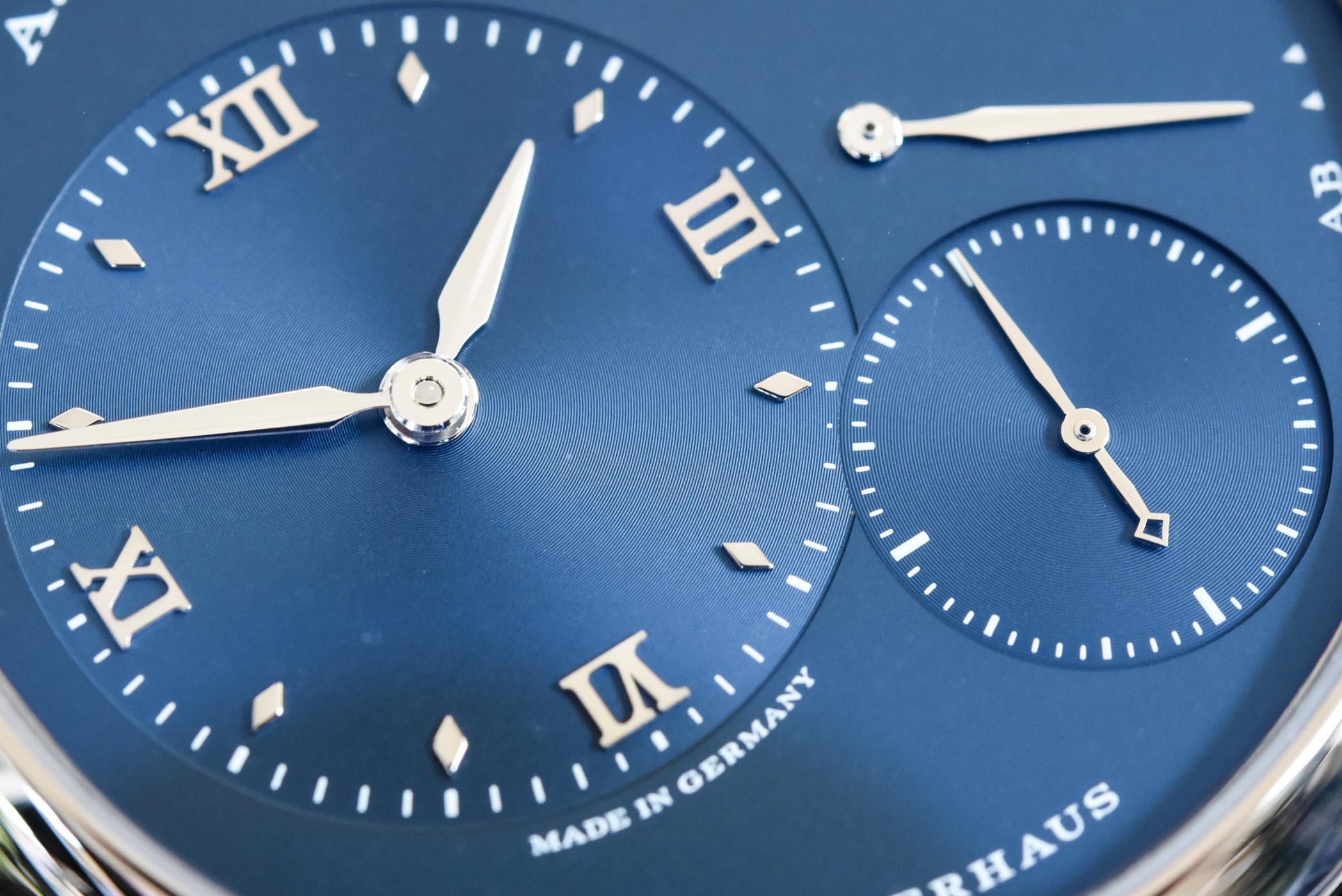
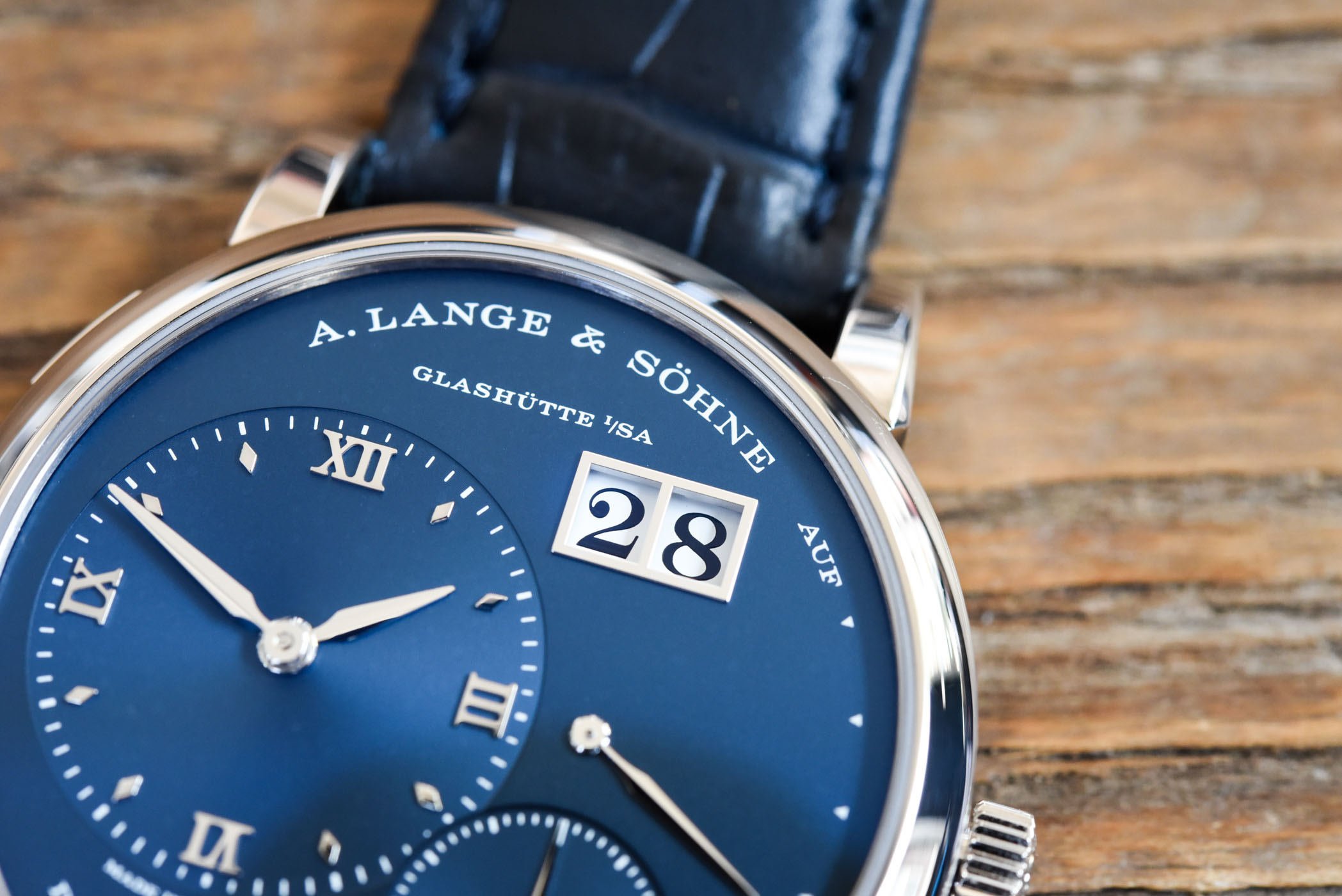
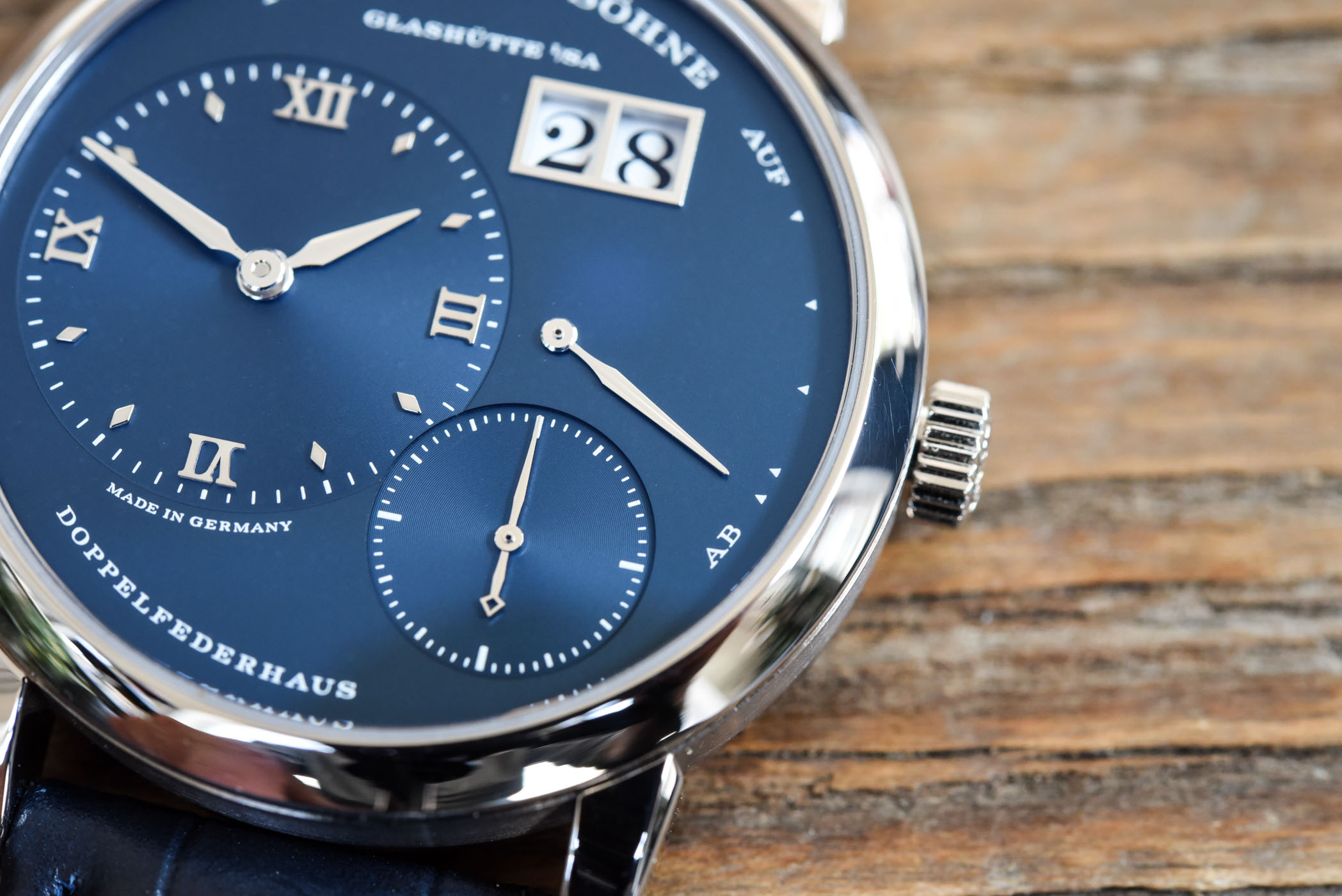
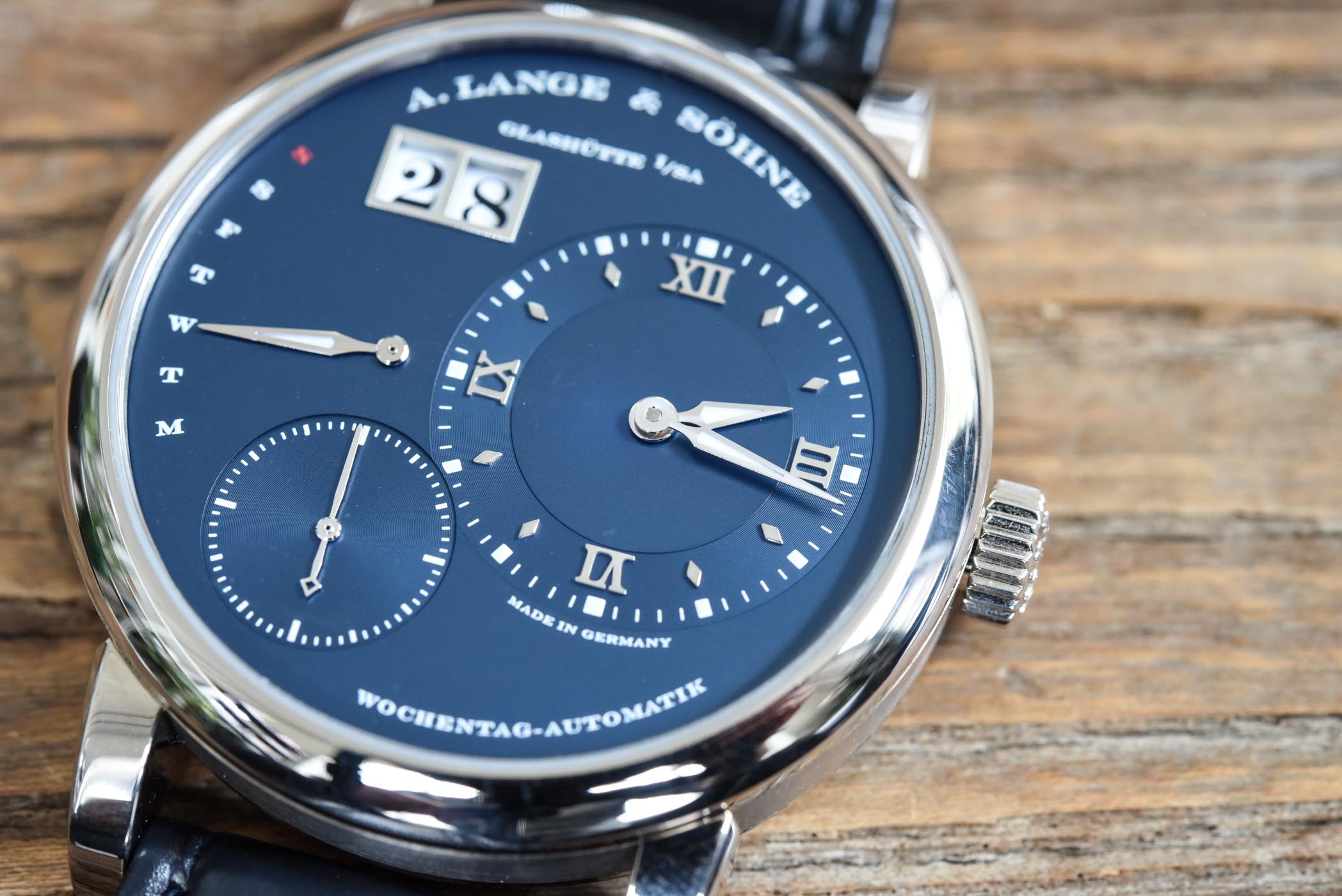
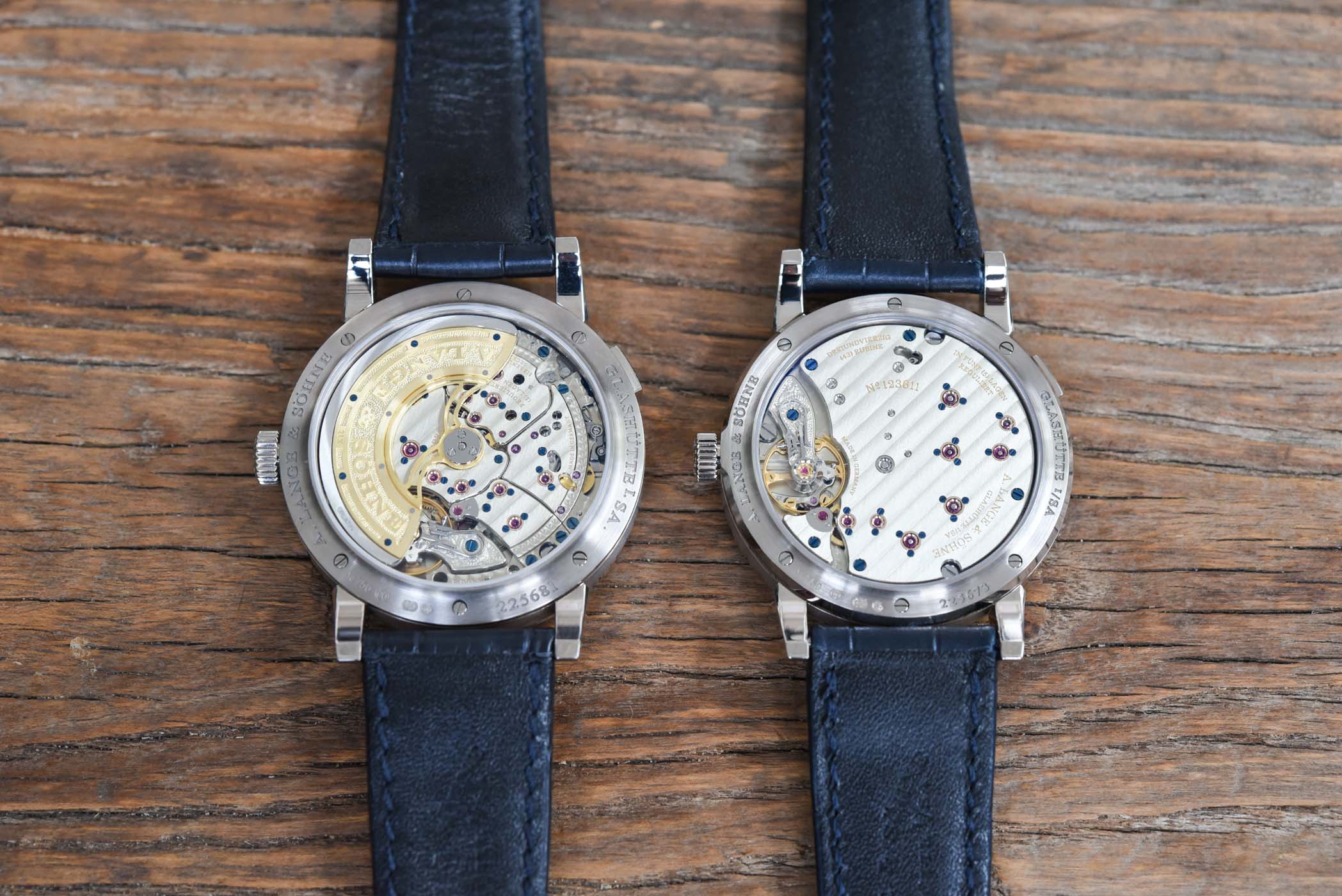
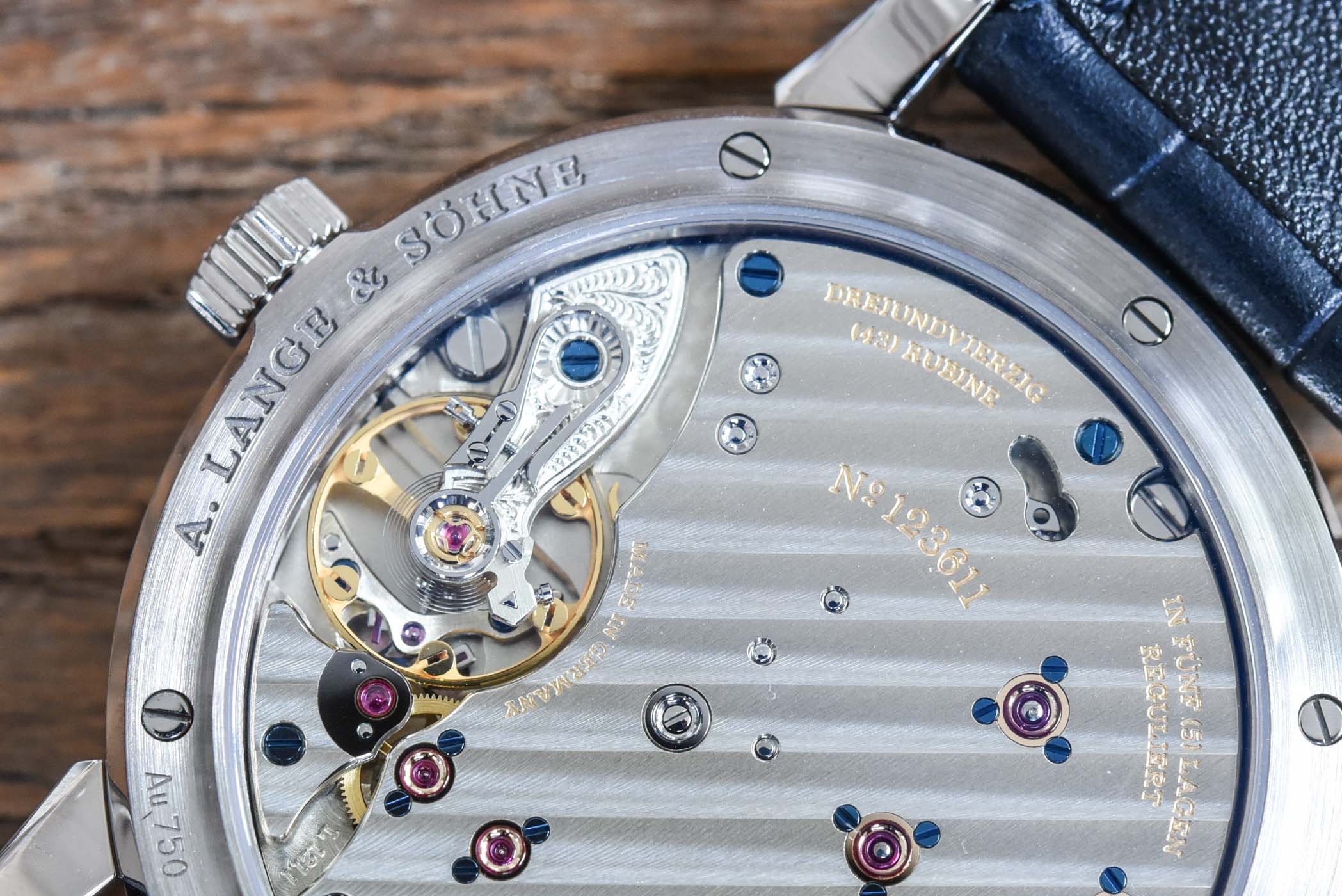
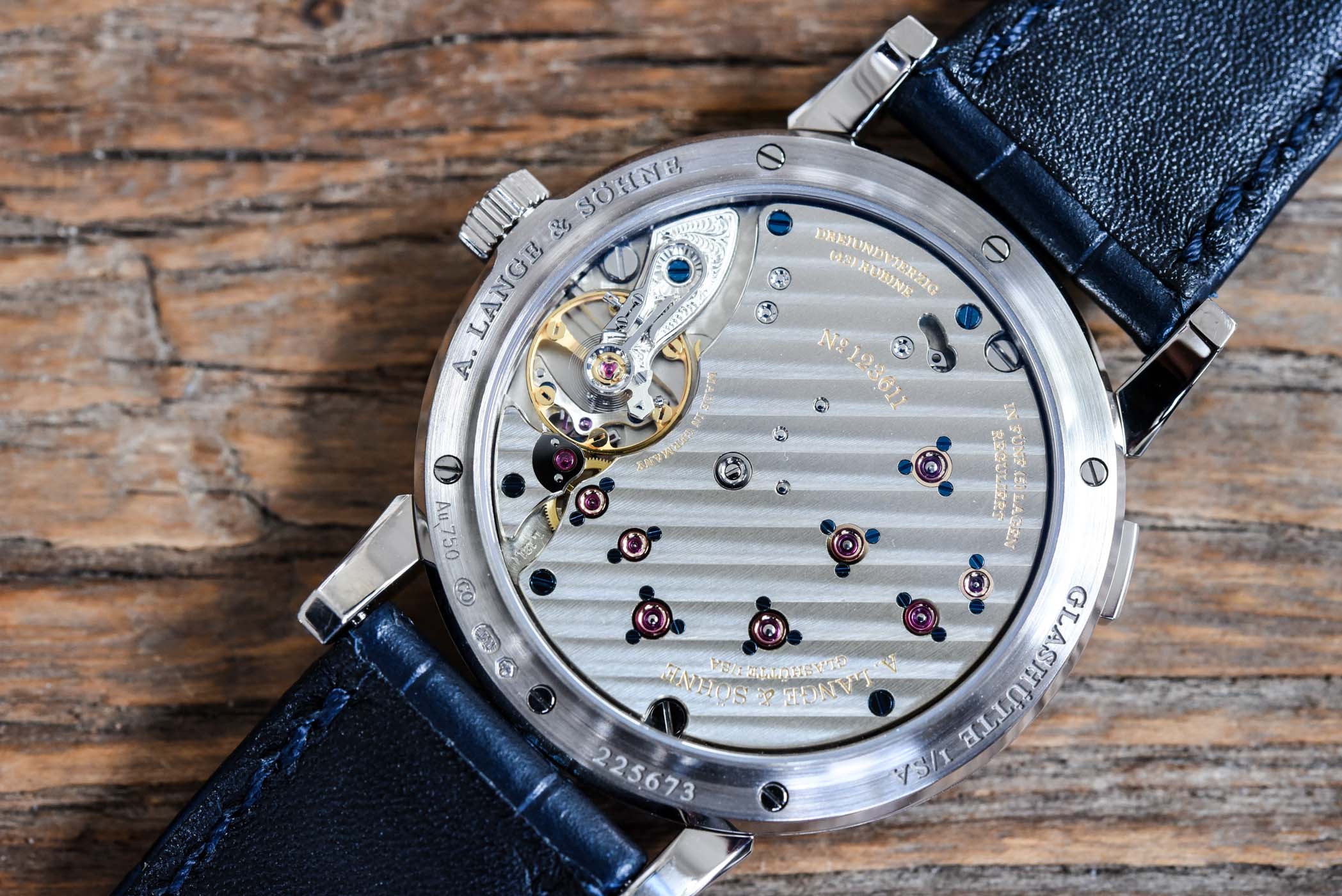
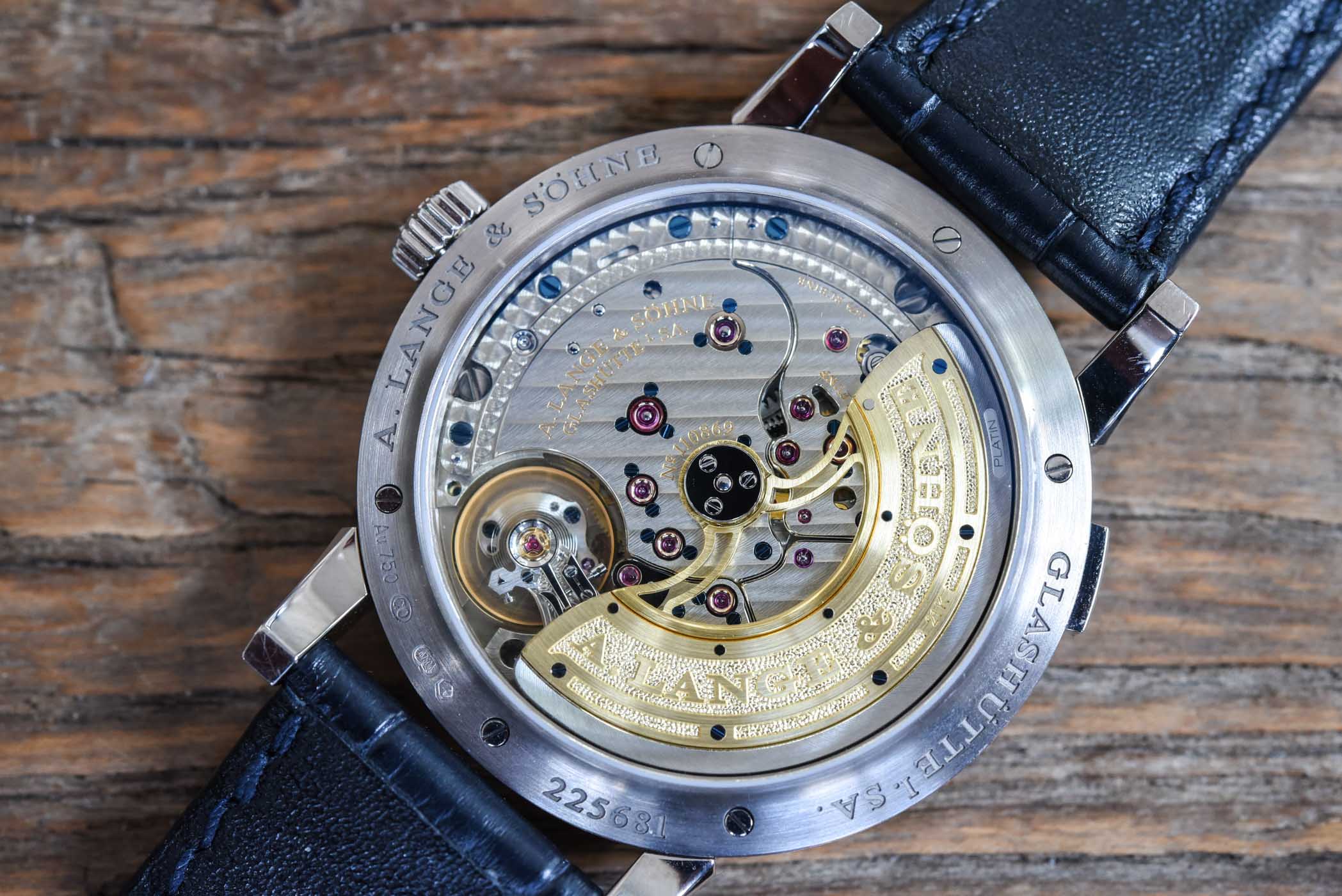
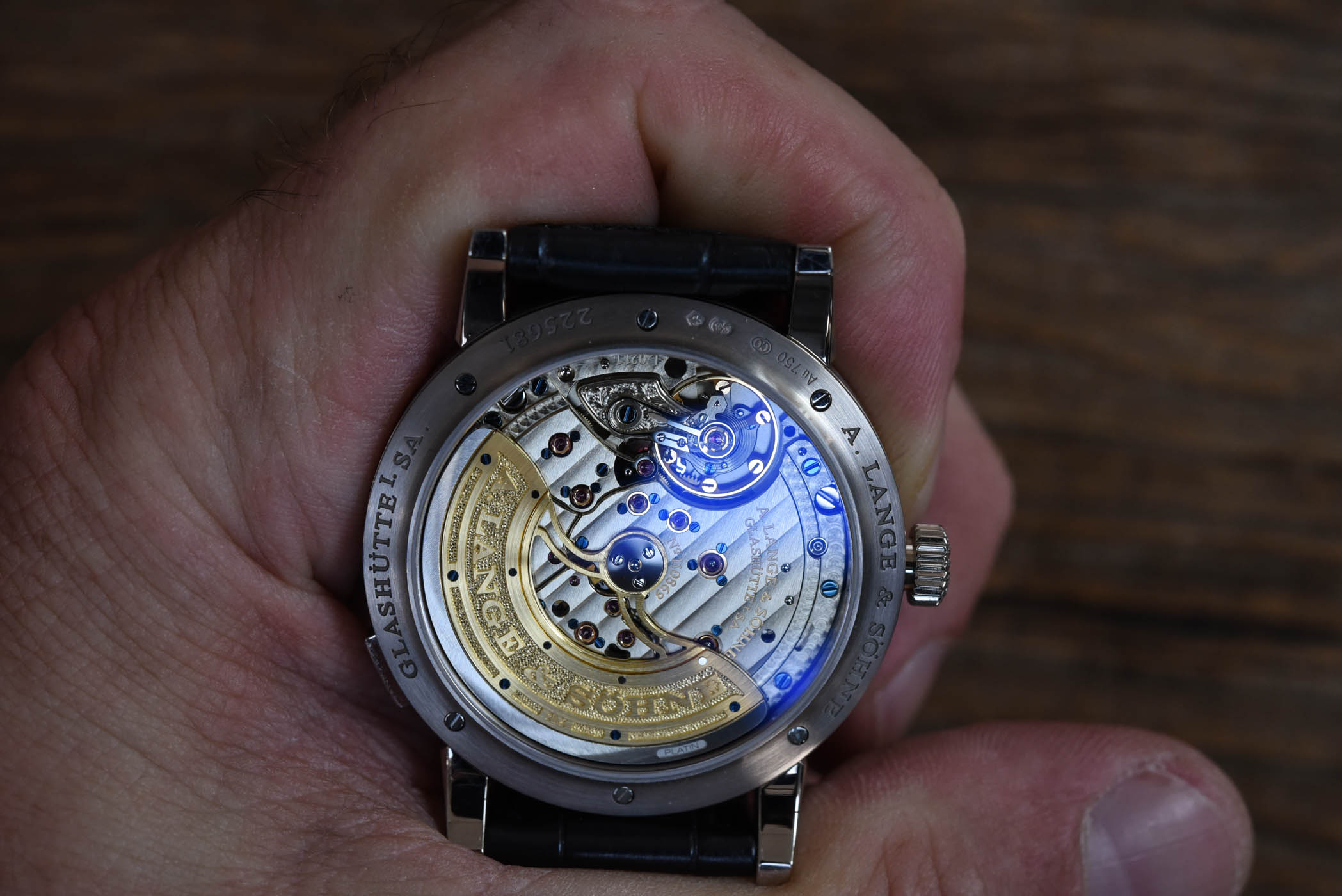
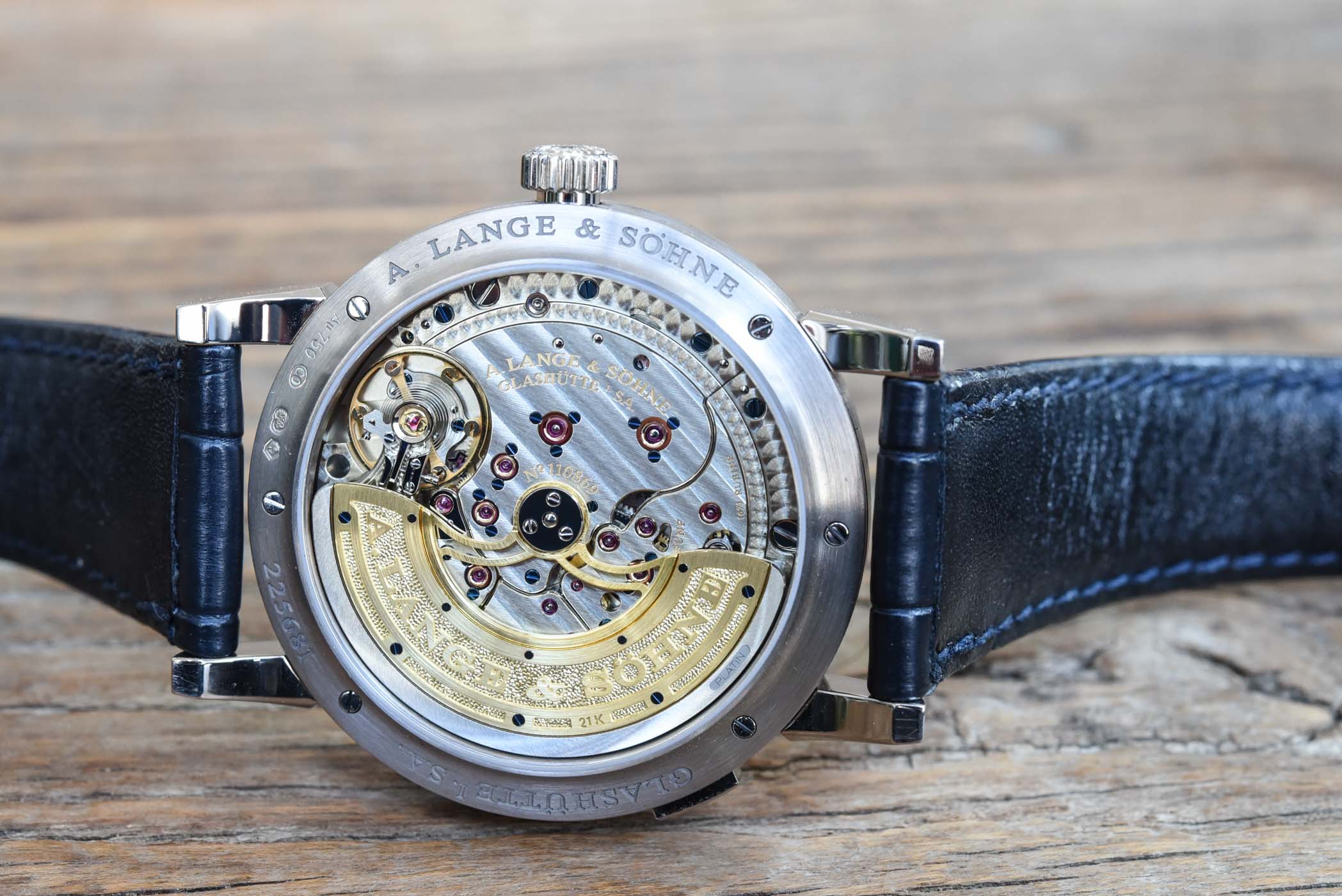
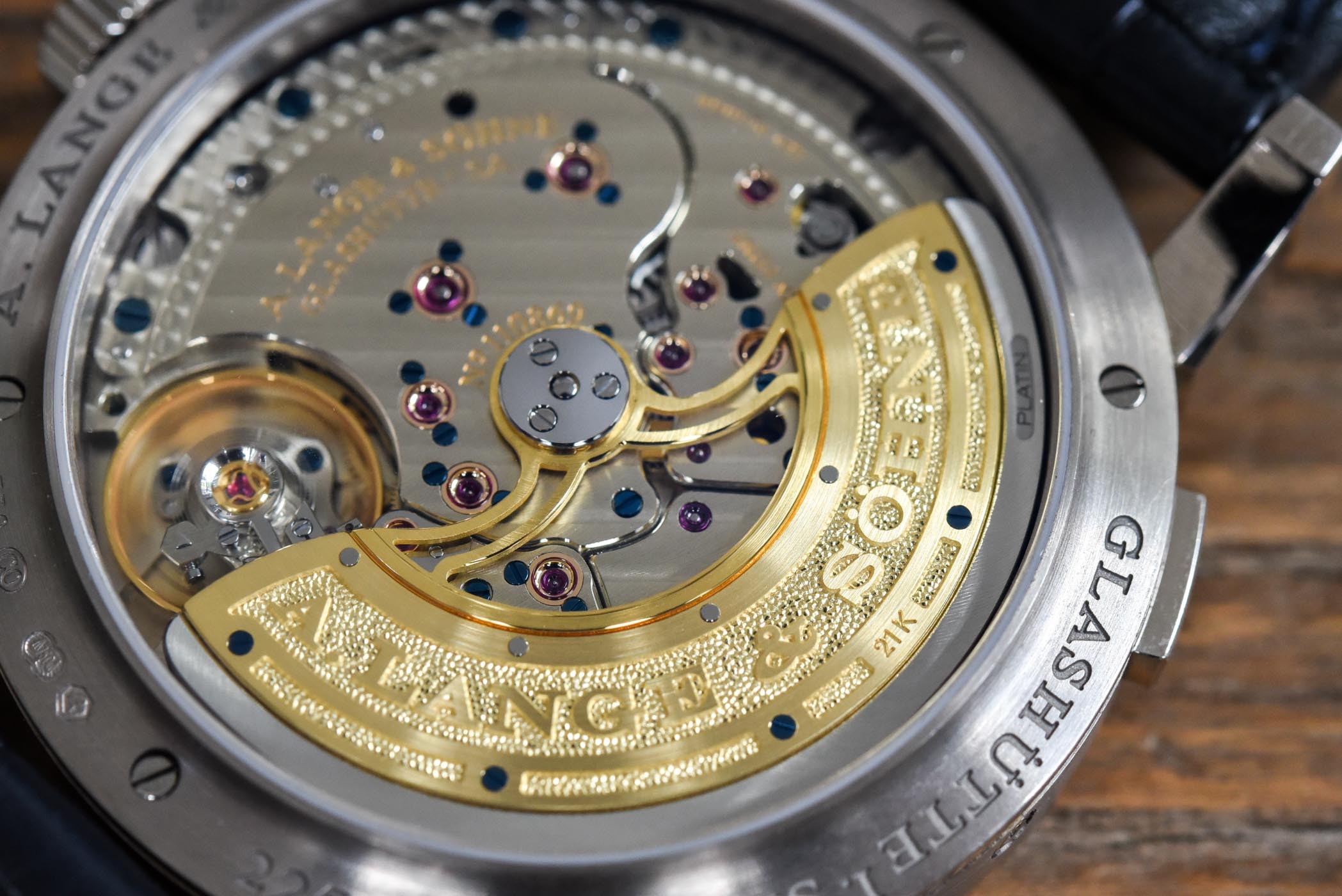

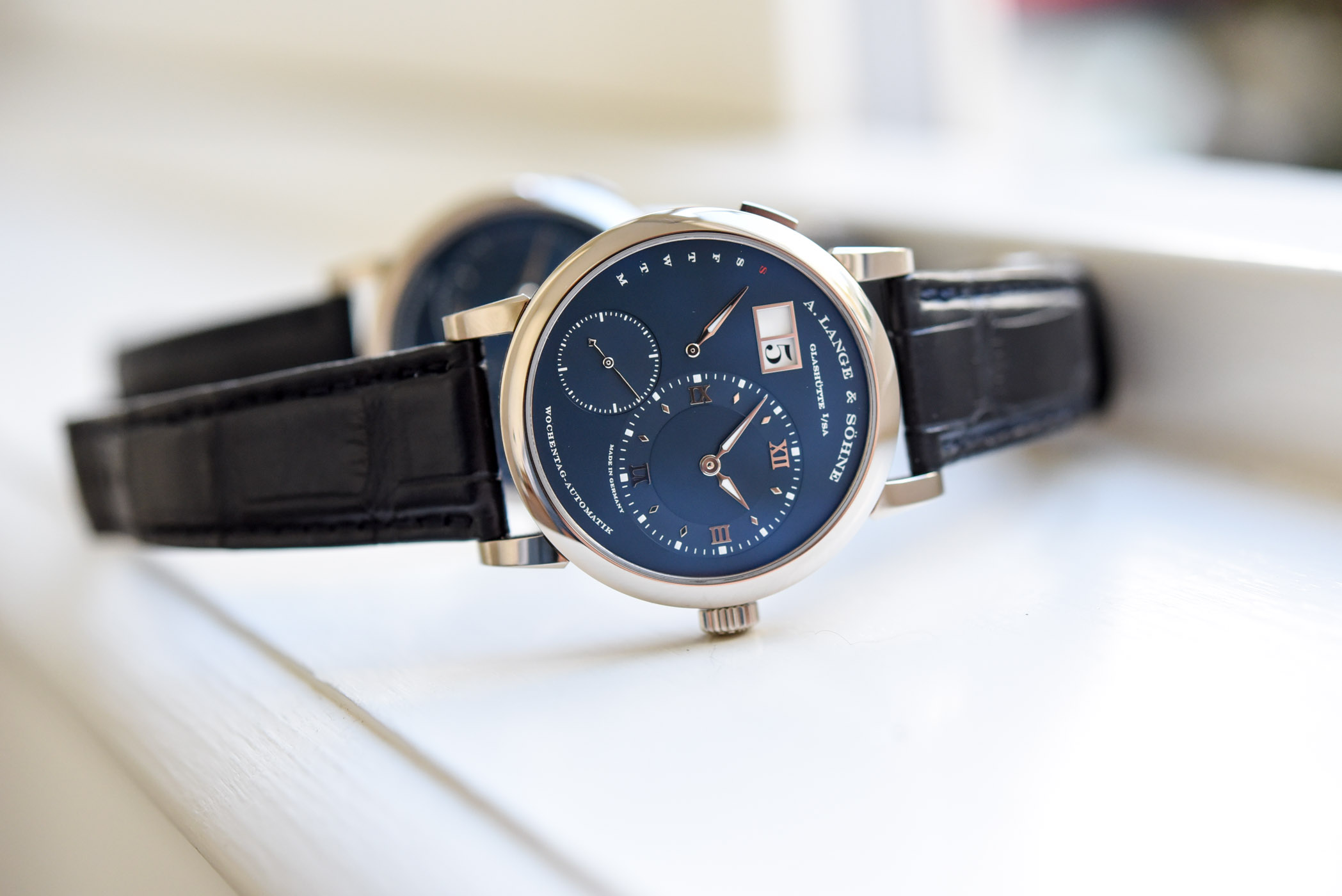



9 responses
Not trying to be different for the sake of it, but my favourite is the Grand Lange 1; mainly because it’s available in white gold with a black dial, which looks stunning. But boy does the Daymatic have a gorgeous movement.
1. I wonder why some colored-dial Lange 1s have matched date wheels but some don’t?
2. I would choose the Lange 1 in one second because I’m a pure hand-wound guy and the power reserve indicator is much more practical for me(whatever in hand-wound or automatic movements).
1. I wonder why some colored-dial Lange 1s have a matched date wheel but some don’t?
2. I would choose the Lange 1 in one second because I’m a pure hand-wound guy and the power reserve indicator is much more practical for me(whatever in hand-wound or automatic movements).
I too prefer the Lange 1, firstly because it is slightly less cluttered and secondly because I read the dial from the left, so the subsidiary information comes “after” the time. Also, handwinders are 73% cooler than automatics.
But my real opinion can be illustrated by the fact that when the images loaded up on my screen I just stared at them for 30 seconds with a funny look on my face and then sighed.
Lange’s slogan should be
“Lange; wir wissen”
I agree with all the above. The Lange 1 has my preference. Manual movements are a dream and the layout of the L1 is marvelous. The daymatic is still gorgeous in all cases. All Lange watches are incredible in fact. Huge huge fan of german watches here.
Excellent article. Being a triple date man, of course I lean to the daymatic, which is almost there. I think the back, with its luxuriously decorated rotor, is worth the extra expense. It seems I am less enthused about these off axis Langes than most. I also find the white on the dial for single digit dates to be a little off putting, as if there should be a less conspicuous solution. Still, its impossible to not love this company, and these two are indeed amazing together or apart.
Great article!! Love both watches and would only ever buy both, but only in my dreams.
Among the best side by side comparisons I’ve read. Thank you!
2021 still a great article and comparison of two beautiful watches. Thank You. Probably one of the best automatic movements ever.